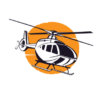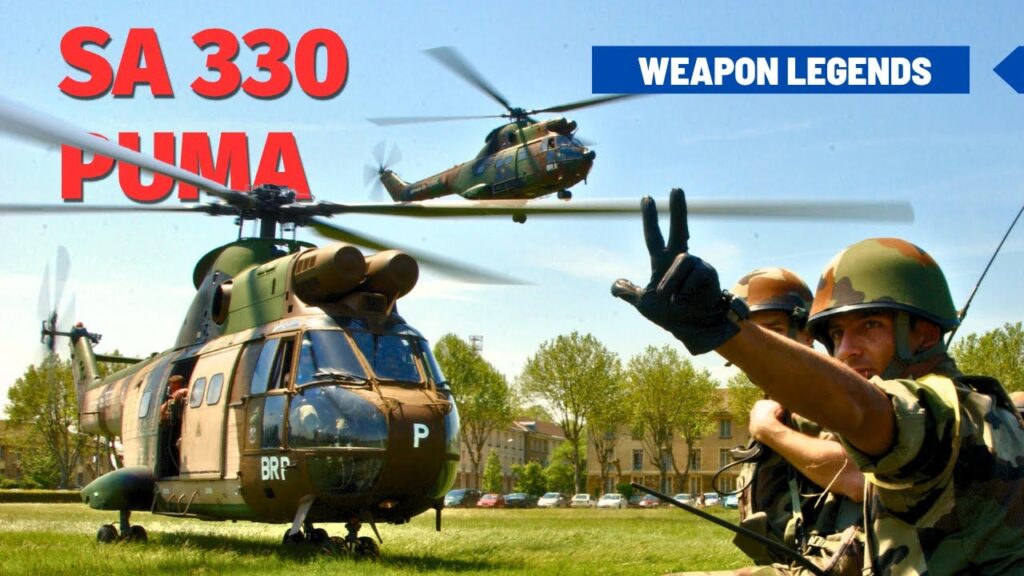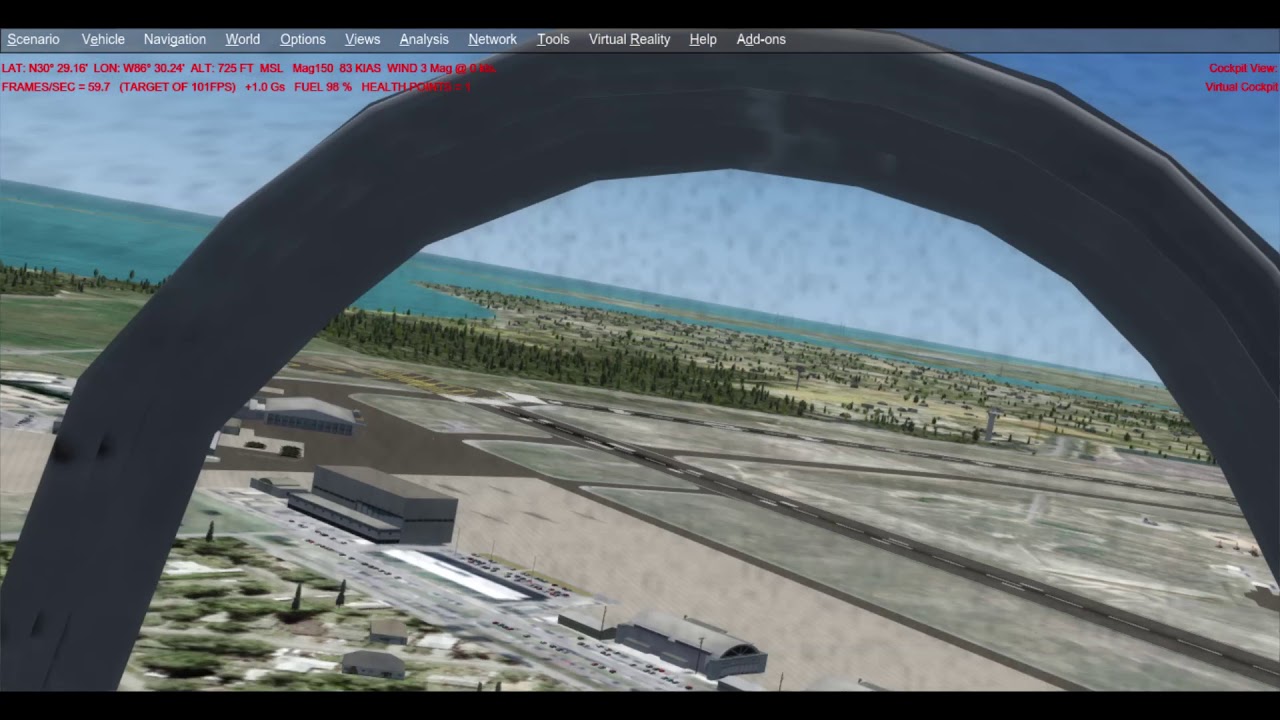The History and Design of the Aérospatiale SA 330 Puma
The Aérospatiale SA 330 Puma is a robust, mid-sized twin-engine helicopter, revered for its versatility and durability. Its journey began in the 1960s when the French and British governments sought to create a medium-lift helicopter capable of performing in a variety of roles. After the initial design phase, the first prototype of the Puma took to the skies in April 1965. The robust and reliable design of the SA 330 Puma garnered immediate attention, leading to its wide adoption by military and civil operators across the globe.
At the heart of the Pumas design is a focus on versatility and operational efficiency. The helicopter features a spacious cabin that can accommodate up to 20 troops or 12 stretchers, making it ideal for both transport and medevac roles. Additionally, the SA 330 Puma is equipped with twin Turbomeca Turmo IV turboshaft engines, which provide excellent performance even in high-altitude and hot-and-high conditions. The robust construction and powerful engines have made the Puma a favorite among operators in challenging environments, such as the deserts of Africa and the mountains of Afghanistan.
Design Evolution
Over the years, the design of the Aérospatiale SA 330 Puma has undergone several modifications to enhance its performance and operational capabilities. One of the most significant upgrades is the Super Puma, which features more powerful engines, a longer fuselage, and modern avionics. The Super Pumas increased power and capacity have further expanded the range of roles this versatile helicopter can perform, including offshore operations, search and rescue, and VIP transport. Despite these upgrades, the core design principles of the original SA 330 Puma—robustness, versatility, and operational efficiency—remain intact, ensuring the enduring legacy of this remarkable helicopter.
Key Features and Specifications of the Aérospatiale SA 330 Puma
The Aérospatiale SA 330 Puma is a medium-sized, twin-engine helicopter designed by the French manufacturer, Aérospatiale. Notable for its versatility, the Puma is utilized in a variety of roles, including search and rescue, firefighting, and military transport. Its key features include exceptional lift capacity, significant range, and powerful performance in various weather conditions.
Powerful Performance and Lift Capacity
One of the standout features of the Aérospatiale SA 330 Puma is its impressive lift capacity. Equipped with two Turbomeca Turmo IVB turboshaft engines, each producing 1,575 horsepower, the Puma can carry up to 20 soldiers or 3,000 kg of cargo. Its powerful engines and robust design allow it to operate in challenging environments, making it a reliable choice for both civilian and military operations.
Significant Range and Speed
Another key specification of the Aérospatiale SA 330 Puma is its significant range and speed. With a maximum speed of 273 km/h and a range of up to 570 km, the Puma can cover large distances quickly, making it particularly useful for search and rescue operations. Additionally, its service ceiling of 4,800 meters enables it to operate effectively in high-altitude environments.
Adaptable Design and Versatility
The Aérospatiale SA 330 Pumas adaptable design also contributes to its versatility. It features a spacious, unobstructed cabin that can be easily reconfigured for different mission requirements. Whether its transporting troops, delivering supplies, or conducting medevac missions, the Pumas flexible design allows it to meet various operational demands, reinforcing its reputation as a truly multi-purpose helicopter.
The Role of the Aérospatiale SA 330 Puma in Modern Aviation
The Aérospatiale SA 330 Puma has played a significant role in modern aviation, thanks to its unique design, advanced features, and exceptional performance. This medium-sized, twin-engine helicopter, designed and manufactured by French company Aérospatiale, is renowned for its multi-purpose utility in both civilian and military operations. Its versatility and robustness have made it a preferred choice in various fields, including search and rescue missions, transportation of troops and equipment, and even in civilian sectors like offshore operations.
One of the key aspects that underscores the role of the Aérospatiale SA 330 Puma in modern aviation is its exceptional durability and adaptability. It is designed to operate in a variety of environments, from the extreme cold of the Antarctic to the scorching heat of the desert. Its capability to withstand harsh conditions has proven invaluable in several emergency situations, further establishing its critical role in the aviation industry.
Technological Advancements
The Aérospatiale SA 330 Puma also stands out for its technological advancements. Its design incorporates advanced avionics and systems, including a fully-integrated autopilot system, a digital flight control system, and a modern glass cockpit. These technological features not only enhance its operational efficiency but also improve safety, making it a reliable choice in modern aviation.
Legacy and Continual Development
Furthermore, the legacy of the Aérospatiale SA 330 Puma continues to influence modern aviation. Its design principles and technological innovations have paved the way for the development of next-generation helicopters. Despite being introduced in the 1960s, the Puma continues to be updated and upgraded, keeping it relevant and valuable in todays aviation landscape.
Comparing the Aérospatiale SA 330 Puma with Other Helicopters
The Aérospatiale SA 330 Puma is a medium-sized utility helicopter designed for a range of tasks, from military operations to civil uses. When compared to other helicopters, the Puma stands out for its impressive performance, durability, and versatility.
Firstly, lets compare the Puma with the Bell UH-1 Iroquois, commonly known as the “Huey”. While both helicopters were designed for military use, the Puma surpasses the Huey in terms of load capacity. The Puma can carry up to 20 soldiers or 6,000 pounds of cargo, compared to the Hueys 14 soldiers or 3,880 pounds. However, the Huey has a slightly higher top speed at 135 mph, compared to the Pumas 129 mph.
Comparing with the Sikorsky UH-60 Black Hawk
Moving on to another comparison, the Puma against the Sikorsky UH-60 Black Hawk. The Black Hawk has a faster top speed at 183 mph and a greater range of 373 miles compared to the Pumas 300 miles. However, the Puma excels in terms of endurance, being able to stay airborne for approximately 4.5 hours, 30 minutes longer than the Black Hawk.
Comparing with the Boeing CH-47 Chinook
Lastly, comparing the Puma with the Boeing CH-47 Chinook, a twin-engine, tandem rotor heavy-lift helicopter. The Chinook surpasses the Puma in terms of load capacity, able to carry up to 55 soldiers or 24,000 pounds of cargo. However, the Puma is more versatile, able to operate in a wider range of environments and weather conditions due to its superior handling and stability.
The Future of Helicopters: Lessons from the Aérospatiale SA 330 Puma
The Aérospatiale SA 330 Puma has been a significant player in the evolution of helicopter design and technology. This mid-sized utility helicopter, first flown in 1965, provides valuable insights into what the future of helicopters might look like. Its success in various fields, including military, civilian, and humanitarian applications, underscores the potential of adaptable and reliable helicopter designs.
Adaptable Design
One of the key lessons from the Aérospatiale SA 330 Puma is the importance of adaptable design. This helicopter has proven its versatility in various roles, from serving as an air ambulance to undertaking search and rescue missions. Future helicopters will likely need to be even more adaptable, capable of serving multiple roles in rapidly changing environments. The SA 330 Puma’s modular design, which allows for easy modifications and upgrades, is a blueprint for future helicopter design.
Reliability and Performance
Another lesson from the Aérospatiale SA 330 Puma is the importance of reliability and performance. Despite being over half a century old, the SA 330 Puma continues to be in service in many countries, a testament to its durability and dependability. Future helicopters will need to build on this legacy, offering even greater reliability and performance. Innovations in materials, propulsion systems, and avionics can help achieve this.
Emphasis on Safety
Lastly, the Aérospatiale SA 330 Puma underscores the importance of safety in helicopter design. Its robust construction and multiple safety features have contributed to its longevity. Future helicopters will need to prioritize safety even more, incorporating advanced technologies like collision avoidance systems and improved emergency landing capabilities. The SA 330 Puma provides a solid foundation for these advancements.



